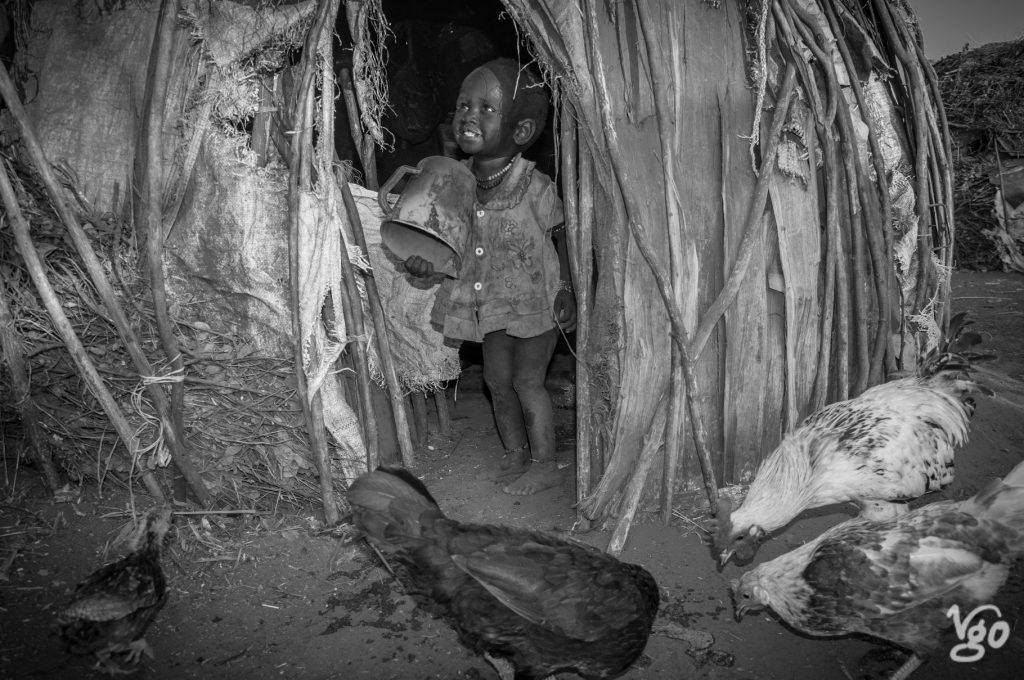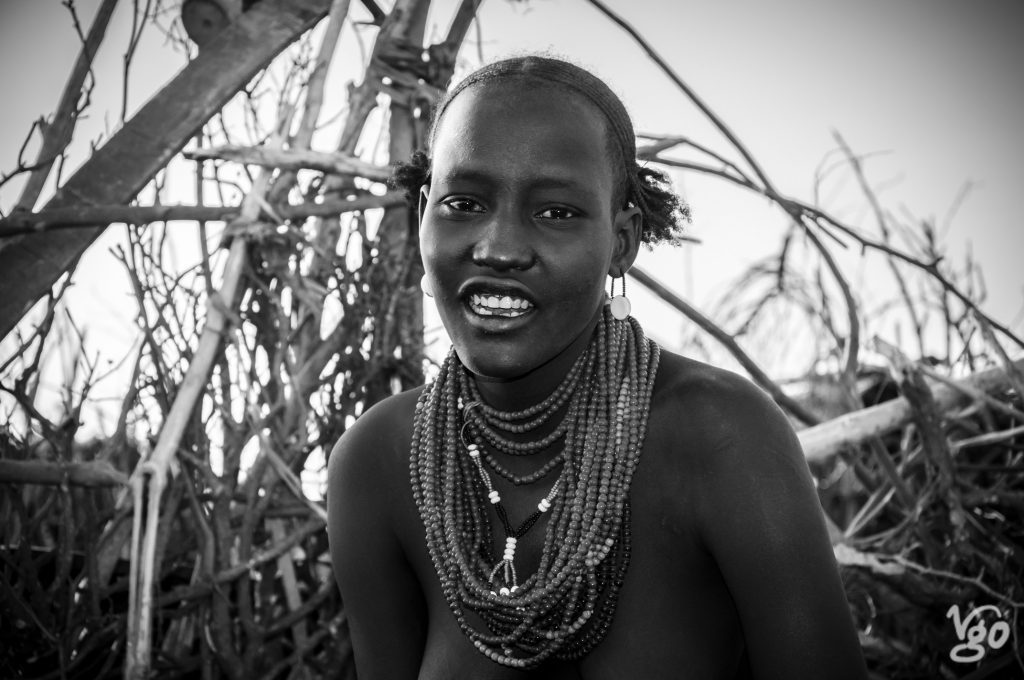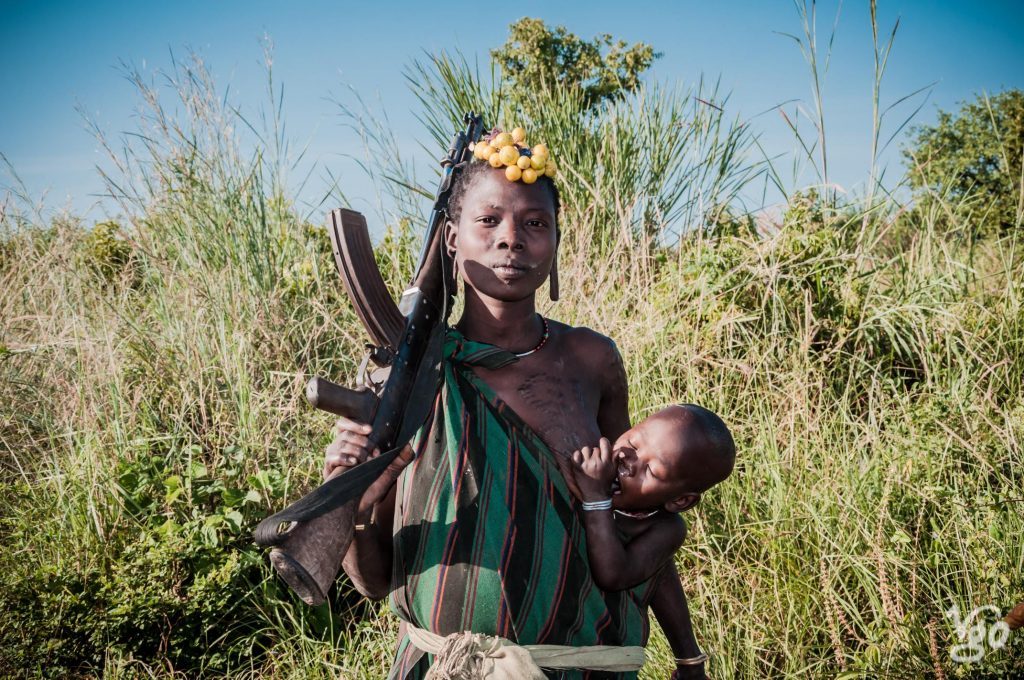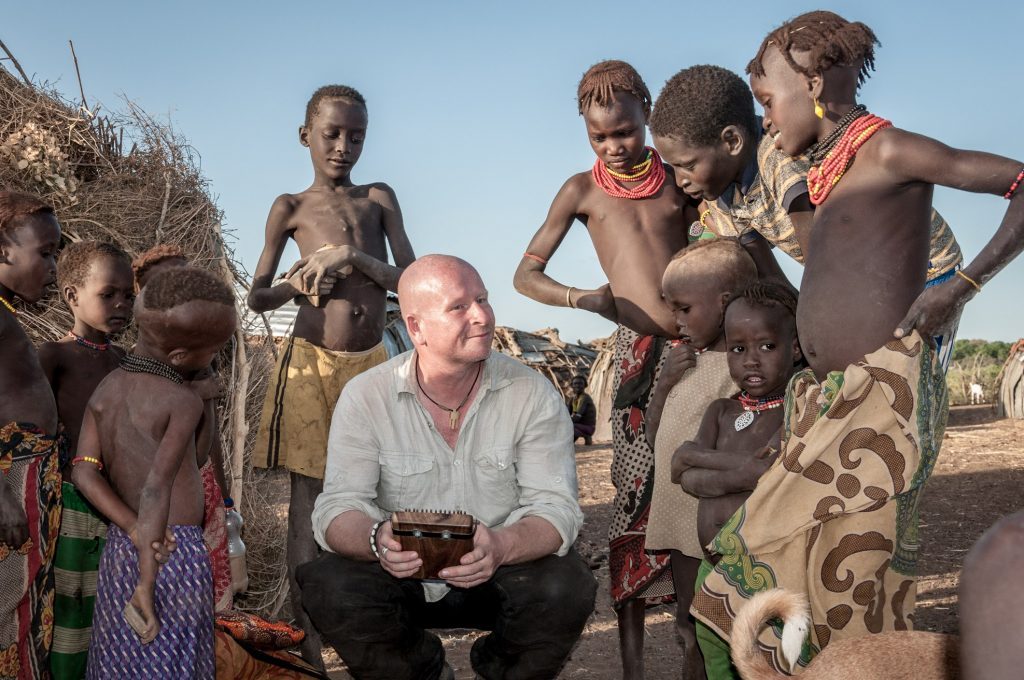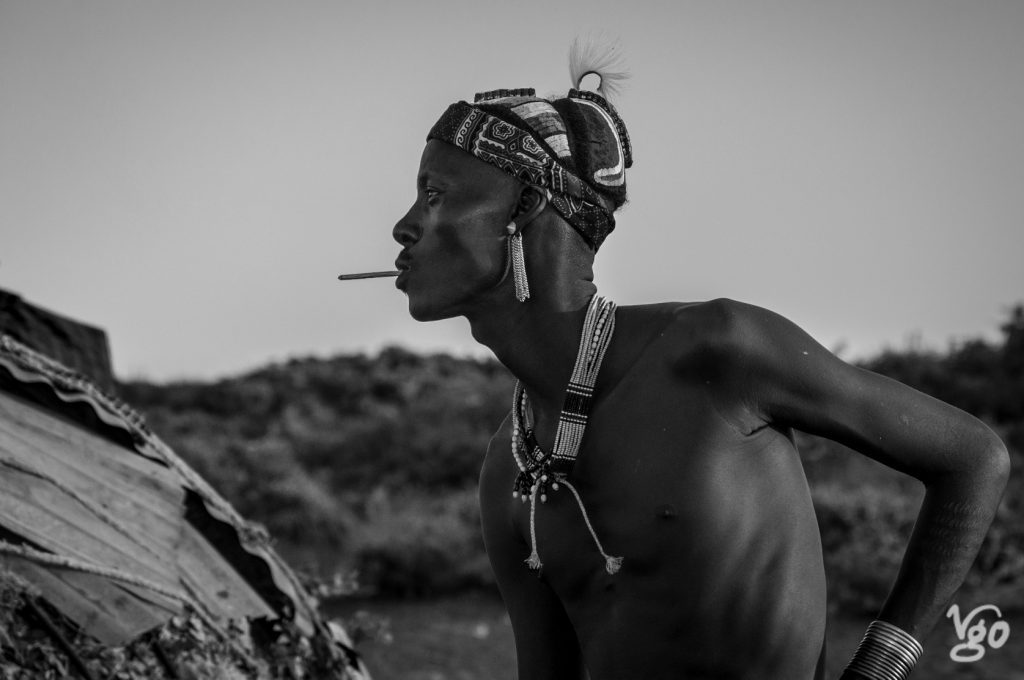
The Daasanach live on both sides of the Ethiopian-Kenyan border. If they want to cross into Kenya, the removed lower front teeth are their passport. I crossed the Omo at Omorate with my guide Gabriel and his friend to reach the nearest village just before sunset, and it was a very enjoyable visit. No other tourists, the kids enjoyed my mbira again, and since I handed my camera to Gabriel’s friend I could freely move about and people cared less about me. Less posing as well. Things must have been similar to the Mursi situation until a while ago, but now the arrangement is such that visitors pay a flatrate of 200 Birr (ca $7.50) to take pics. The German lawyer who gave me a lift the next day had been to the very same village in the morning, in a crowd of tourists. He said that as much as he loves photography, he found the village arranged in such a way that half-naked women were sat outside their huts staring into the distance apathetically, and he refrained from taking any pictures at all. My experience was totally different. I was able to interact with the people to a degree, and I am very grateful to Gabriel’s friend for the pics he took – he’s a natural photographer, I must say. And I find the Dassenach are amongst the most beautiful people I’ve ever seen.

